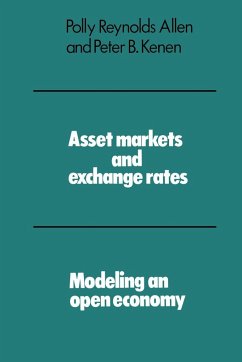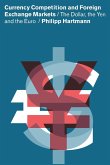This paperback edition consists of the first three parts of Allen and Kenen's major book, Asset Markets, Exchange Rates, and Economic Integration. These three parts stand alone, as the authors intended and as reviewers have commented. In parts four and five of that volume they extend their model to two countries trading with the outside world and analyze questions of economic integration. The authors synthesize and extend recent developments in international monetary theory using a general model of an open economy that trades goods and assets with the outside world. The model embodies the asset market or portfolio approach to analyzing balance-of-payments adjustment. Exchange rates are determined in the short run by conditions in the asset markets and in the long run by conditions in the goods markets. The goods markets include an export good, and import good, and a nontradeable good. Allen and Kenen show that different assumptions about the substitutability between goods or between assets can generate several popular models as special cases of their own.
Table of contents:
Preface; Part I. Introduction: 1. An agenda; Part II. Modeling an Open economy: 2. The structure of the model; 3. Solving the model; 4. Comparative statics: goods-market disturbances; 5. Comparative statics: asset-market and compound disturbance; 6. Dynamics under pegged and flexible exchange rates; Part III. Extending the Model: 7. Claims, caveas, and simplifications; 8. On money, income, and insulation; 9. Expectations, speculation, and exchange-rate stability; 10. On the specification of fiscal policy; Part IV. Analyzing Interdependence: 11. A two-country model; 12. Similarities and symmetries in goods and asset markets; 13. Comparative statics in the two-country model; Part V. The Theory of Financial Integration: 14. Dimensions of integration; 15. Market integration, interdependence, and monetary policy under pegged exchange rates; 16. The analytics of a monetary union; 17. Market integration, interdependence, and fiscal policy under pegged exchange rates; 18. Fiscal policy in a monetary union; Appendixes; Glossary; Index.
Table of contents:
Preface; Part I. Introduction: 1. An agenda; Part II. Modeling an Open economy: 2. The structure of the model; 3. Solving the model; 4. Comparative statics: goods-market disturbances; 5. Comparative statics: asset-market and compound disturbance; 6. Dynamics under pegged and flexible exchange rates; Part III. Extending the Model: 7. Claims, caveas, and simplifications; 8. On money, income, and insulation; 9. Expectations, speculation, and exchange-rate stability; 10. On the specification of fiscal policy; Part IV. Analyzing Interdependence: 11. A two-country model; 12. Similarities and symmetries in goods and asset markets; 13. Comparative statics in the two-country model; Part V. The Theory of Financial Integration: 14. Dimensions of integration; 15. Market integration, interdependence, and monetary policy under pegged exchange rates; 16. The analytics of a monetary union; 17. Market integration, interdependence, and fiscal policy under pegged exchange rates; 18. Fiscal policy in a monetary union; Appendixes; Glossary; Index.








